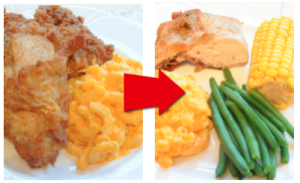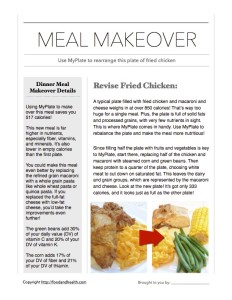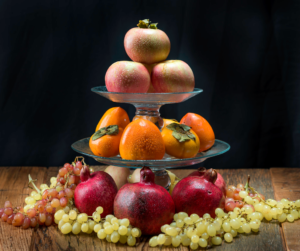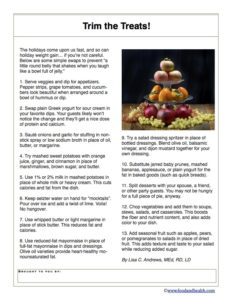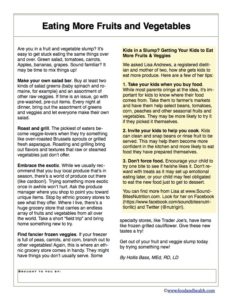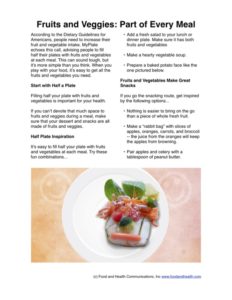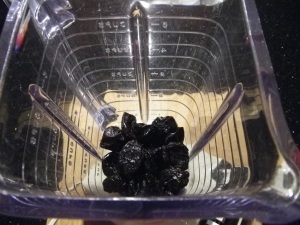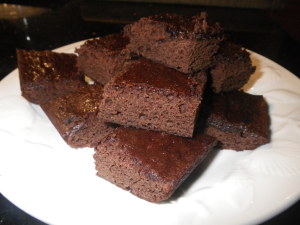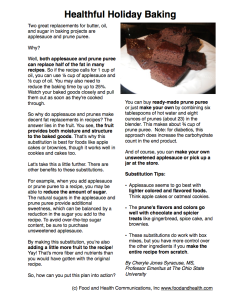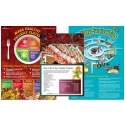It’s totally possible to have healthful and fun holiday celebrations.
Just don’t eat everything in sight.
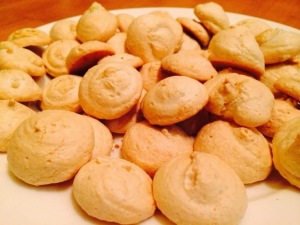 I know this seems like a no-brainer, but the holidays are all about balance. Overindulgence is the actual pitfall.
I know this seems like a no-brainer, but the holidays are all about balance. Overindulgence is the actual pitfall.
What got me thinking about this? Well, I’ve seen several Facebook posts this past week about cookie baking. Two different friends posted photos of their families baking together.
While you may expect me to say “Bah Humbug” to these events, I actually think they’re wonderful. What a great way to spend time together, and what a delightful holiday tradition!
I’m also not going to say “don’t eat those cookies, they aren’t good for you.”
Okay. I admit that that thought did go through my mind, but I’m trying to be realistic. You can’t give up all your favorites. I’ve seen several articles already recommending that you go ahead and eat some cookies or other holiday treats — just do so in moderation. Feeling like a martyr about food tends to backfire.
Now I’m not suggesting that you make every food “free” or “no calorie,” but go ahead and have a little bit of your holiday favorites.
And what about the rest of the holiday foods? Well, that’s where substitution comes in.
There are plenty of ways to replace particular ingredients in order to make holiday treats more healthful. With these substitutions, I promise, no one will know the difference. In some cases it’s not even what you’re taking out but what you’re putting in that counts.
Let’s look at an example. A couple of weekends ago, we had some friends over for brunch. The featured item was waffles. These weren’t just any old waffles from a mix, and they were definitely not freezer waffles. Instead, these were yeasted waffles that needed time to rise. You have to wake up early to get them going before your guests get up. The recipe calls for eggs, milk, sugar, flour, yeast, and lots of butter.
I did not destroy these waffles. I did not replace every ingredient. Instead, I made a few slight tweaks. I used skim milk instead of whole milk, and I substituted part whole grain flour for some regular white flour. These waffles were so good that they didn’t need butter or syrup. Instead I topped mine with fresh fruit.
Here’s another example. I recently made stuffing using slightly different ingredients. I began with whole grain bread instead of white bread. Then, instead of the eggs and butter from my mom’s traditional recipe, I tried adding leftover mashed pumpkin.
The stuffing was amazing. The changes I made increased the fiber content of each serving, added a vegetable to the mix, and boosted the flavor too. Who would have guessed that I could make such great changes to a previously fat-loaded family favorite without a single complaint?
Looking for more modifications? Try these…
Replace heavy cream with fat-free half-and-half or evaporated skim milk.
Replace a portion of white flour with 100% whole wheat flour. White whole wheat flour, by King Arthur, has the best results and can almost be replaced 100%.
In most recipes, you can slightly reduce the amount of sugar. Compensate with an extra dash of sweet flavorings like vanilla extract or cinnamon. These give a hint of sweetness without the calories.
Use fewer chocolate chips or substitute dried fruits or nuts instead.
Did you know that two large egg whites can replace one whole egg?
Combine 1/4 cup Greek yogurt with ½ cup butter to replace 1 cup of butter in a recipe.
What else am I up to in our holiday kitchen? Well actually, our family requested a really non-traditional holiday food this year for Christmas. They want low-country “Shrimp and Grits.”
I’m exploring ways to make this dish a little lighter. Right now I’m planning to use broth instead of butter, more onions, and maybe some celery. I think I’ll add more seasonings for flavor and use a little less bacon. Of course, there will still be shrimp and it will still be served on stone-ground grits.
There are lots of tips out there for ways to modify recipes, make changes, and eat healthfully, even during the holidays. Be mindful. Just don’t eat everything in sight.
By Cheryle Jones Syracuse, MS, Professor Emeritus at The Ohio State University



